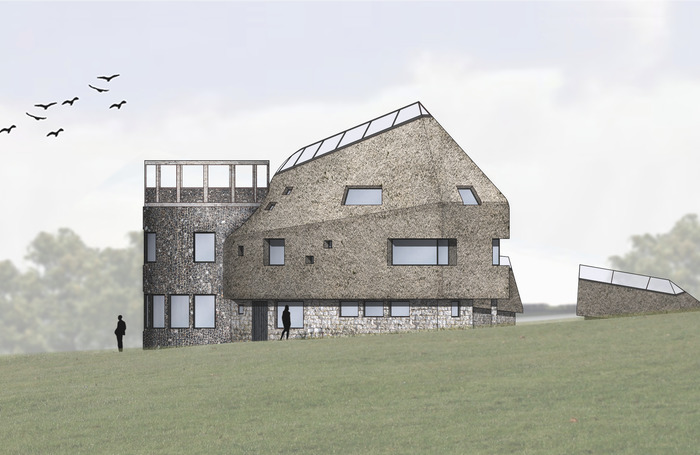Setting up a satellite office out of London is one thing, relocating the practice entirely would look like a leap too far for many architects. But Norwich-based Hudson Architects made the move and has been growing steadily ever since.
Norfolk-raised Anthony Hudson was always determined to move back to East Anglia eventually. When the great recession hit his family had already moved back to Norwich while he continued to practice in a small partnership in London.
‘I had always believed that architecture should be less London-centric,’ he says. ‘And with the family in Norfolk it made sense to try to generate work in and around the city.’

He opened an ‘office’ in Norfolk – ostensibly an office, although it was Hudson working part of the time at home. The original London-based partnership had by then been dissolved.
The turning point was the conversion of a listed building in the centre of Norwich into the Open Youth Venue, a 24-hour, multi-purpose centre for the charitable Open Youth Trust, and the decision of one of Hudson’s senior colleagues to join him in Norwich.
Though still working mainly from London, this local project gave Hudson the confidence to set up the satellite office in earnest, and the approaching end of a lease for the London office finalised the decision to relocate completely.
‘It was the recession, so we were the new people on the block and expanding [in Norwich] at the same time everyone else was contracting and tightening their belts. Those first two years brought us a substantial amount of work. At the same time the practice had moved from higher London costs to lower local costs.’
The projects did not simply fall into Hudson’s lap, however. He had already embarked on a campaign of networking and contact-building, becoming a CABE regional representative, active in the Norfolk Association of Architects and the Regional Cultural Consortium and building on his local connections to make sure everyone knew that Hudson Architects had arrived.
‘If you are going to relocate, the crucial thing is setting up your contacts beforehand. You need to know who is doing what and where the opportunities are. The good thing is that the success rate for making good contacts is much better out of London.’
Practice visibility is next on the list. Hudson was not looking for a green, rural hideaway, but wanted a central presence in Norwich so that everyone would notice. The current office combines a central location with a gallery and exhibition space to generate more attention.
‘If you leave London, get the best visibility you can, it makes it so much easier to get opportunities.’
The practice’s arrival in Norwich meant it was well placed to win several projects at the then expanding Norwich University of the Arts, including the creation of a new school of architecture. This in turn did help solve one of the few location-related problems the practice faced, which was attracting good Part 1 students.
Hudson Architects did not sever ties with London completely, it maintains an office there. Hudson says he is in London most weeks, meeting people and clients, and some of its work, such as one-off houses, is still run from London. But now it is the London ‘office’ which is essentially a workspace (within another practice’s office) rather than the other way around.
The practice is now 22-strong, and while it enjoys a strong presence in Norwich and East Anglia, it has a portfolio of projects around the UK and overseas.
Hudson’s advice to anyone considering abandoning the capital is to become part of the business and social community of your new home and to make sure everyone knows you are there:
‘The transition is exhausting, running between two offices, and the transition costs will push you to get set up as quickly as possible, but there was never a point when I thought “I wish I hadn’t done this”.’
Thanks to Anthony Hudson, Director, Hudson Architects.
Text by Neal Morris. This is a Professional Feature edited by the RIBA Practice team. Send us your feedback and ideas
RIBA Core Curriculum Topic: Business, clients and services.
As part of the flexible RIBA CPD programme, Professional Features count as microlearning. See further information on the updated RIBA CPD Core Curriculum and on fulfilling your CPD requirements as an RIBA Chartered Member.
Posted on 23 August 2018.









